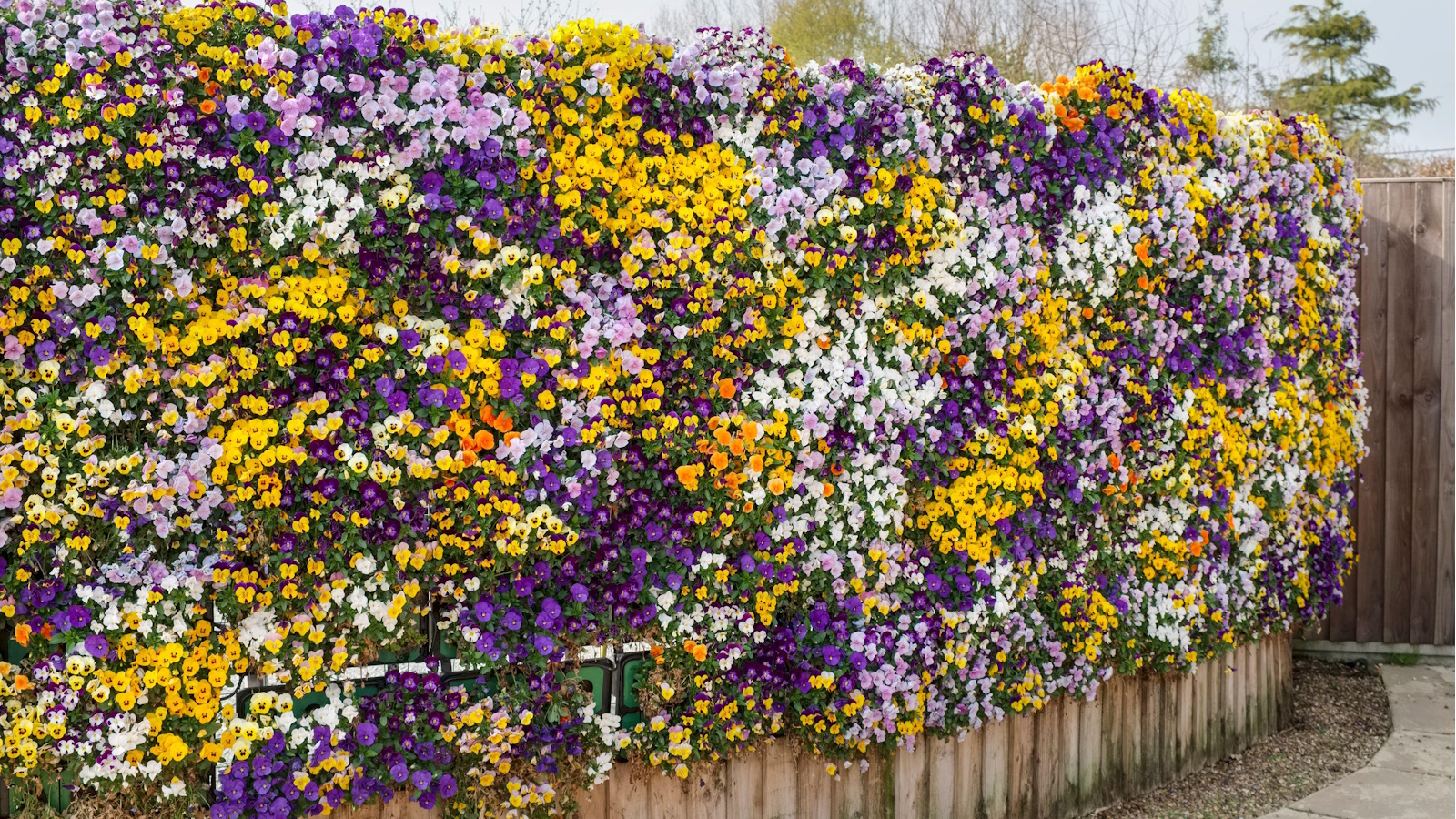Reaching for the Sky: A Guide to Climbing Flowers for Every Garden

Climbing flowers are the acrobats of the garden, adding vertical interest, softening harsh lines, and transforming mundane structures into breathtaking displays of color and fragrance. From delicate vines draped across trellises to robust climbers engulfing walls, these versatile plants offer endless possibilities for enhancing your outdoor space. This comprehensive guide will delve into the world of climbing flowers, exploring their benefits, popular varieties, cultivation techniques, and creative applications.
Why Choose Climbing Flowers?
Climbing flowers offer a multitude of advantages that make them a valuable addition to any garden:
- Vertical Interest: They break up the monotony of flat landscapes, drawing the eye upward and creating a sense of depth and dimension.
- Space Saving: Ideal for small gardens or balconies, climbers utilize vertical space efficiently, allowing you to grow a greater variety of plants.
- Screening and Privacy: Dense climbers can create natural screens, providing privacy from neighbors and blocking unsightly views.
- Aesthetic Appeal: The vibrant colors and delicate forms of climbing flowers add beauty and charm to any structure they adorn.
- Fragrance: Many climbing flowers are highly fragrant, filling the air with sweet and intoxicating scents.
- Wildlife Attraction: Climbing flowers attract pollinators like bees, butterflies, and hummingbirds, contributing to a thriving ecosystem.
- Structural Support: They can enhance the appearance of fences, walls, pergolas, arbors, and other garden structures.
- Erosion Control: Some climbers can help stabilize slopes and prevent soil erosion.

Popular Climbing Flower Varieties:
The world of climbing flowers is incredibly diverse, offering a wide range of colors, shapes, and growth habits. Here are some popular and readily available varieties:

-
Clematis: Known as the "Queen of Climbers," Clematis boasts a stunning array of flower shapes and colors, from delicate bell-shaped blooms to large, star-shaped blossoms. They thrive in well-drained soil and require regular pruning to maintain their shape and promote flowering. Popular varieties include ‘Jackmanii’ (deep purple), ‘Nelly Moser’ (pink with red stripes), and ‘Montana’ (abundant small flowers).

Wisteria: Wisteria is renowned for its cascading clusters of fragrant, pea-like flowers in shades of purple, blue, pink, and white. This vigorous climber requires strong support and regular pruning to control its growth. Chinese Wisteria (Wisteria sinensis) and Japanese Wisteria (Wisteria floribunda) are the most common species.
-
Honeysuckle (Lonicera): Honeysuckle is prized for its intensely fragrant, tubular flowers that attract hummingbirds and butterflies. Many varieties offer a long blooming season and come in a range of colors, including white, cream, yellow, and pink. ‘Goldflame’ and ‘Halliana’ are popular choices.
-
Climbing Roses: A classic choice for adding romance and elegance to the garden, climbing roses offer a vast selection of flower colors, shapes, and fragrances. They require regular pruning and training to encourage upward growth. Popular varieties include ‘New Dawn’ (light pink), ‘Golden Showers’ (yellow), and ‘Climbing Iceberg’ (white).
-
Trumpet Vine (Campsis radicans): Trumpet vine is a vigorous climber with showy, trumpet-shaped flowers in shades of orange, red, and yellow. It attracts hummingbirds and is relatively low-maintenance. However, it can be invasive in some regions, so it’s important to monitor its growth.
-
Morning Glory (Ipomoea): Morning glories are known for their vibrant, trumpet-shaped flowers that open in the morning and close in the afternoon. They come in a range of colors, including blue, purple, pink, and white. They are relatively easy to grow from seed and are often used as annual climbers.
-
Passionflower (Passiflora): Passionflowers are exotic and intriguing climbers with intricate, otherworldly blooms. They come in a variety of colors and shapes and are often grown for their unique beauty. Some varieties produce edible fruits.
-
Bougainvillea: While technically a shrub, Bougainvillea can be trained as a climber. It’s prized for its vibrant bracts (modified leaves) in shades of pink, purple, red, orange, and white. It thrives in warm climates and requires plenty of sunlight.
Cultivating Climbing Flowers:
Successful cultivation of climbing flowers requires attention to several key factors:
-
Choosing the Right Variety: Consider your climate, soil type, and the amount of sunlight your garden receives when selecting climbing flower varieties. Research the mature size and growth habits of each plant to ensure it’s suitable for your space.
-
Providing Adequate Support: Climbing flowers need a sturdy support structure to climb on. This could be a trellis, arbor, pergola, fence, or wall. Choose a support that is appropriate for the weight and growth habit of the plant.
-
Soil Preparation: Most climbing flowers prefer well-drained soil that is rich in organic matter. Amend your soil with compost or well-rotted manure before planting.
-
Planting: Dig a hole that is twice as wide as the root ball and as deep. Gently loosen the roots before planting and position the plant so that the top of the root ball is level with the surrounding soil. Water thoroughly after planting.
-
Watering: Water regularly, especially during dry periods. Newly planted climbers need consistent moisture to establish their roots.
-
Fertilizing: Fertilize your climbing flowers in the spring with a balanced fertilizer to promote healthy growth and abundant flowering.
-
Pruning: Pruning is essential for maintaining the shape, size, and flowering potential of climbing flowers. The pruning requirements vary depending on the species, so research the specific needs of your chosen varieties. Generally, prune after flowering to remove dead or damaged wood and to encourage new growth.
-
Training: Guide the stems of your climbing flowers onto the support structure as they grow. Use soft ties or twine to secure the stems in place.
Creative Applications for Climbing Flowers:
Climbing flowers can be used in a variety of creative ways to enhance your garden:
- Adorning Fences and Walls: Transform a plain fence or wall into a living tapestry of color and fragrance.
- Creating a Romantic Arbor or Pergola: Frame a walkway or seating area with a flowering arbor or pergola.
- Covering a Garden Shed or Garage: Disguise an unsightly structure with a cascade of blooms.
- Adding Vertical Interest to Containers: Train climbing flowers to grow up trellises or obelisks in containers.
- Creating a Living Screen: Use dense climbers to create a natural screen for privacy.
- Softening the Edges of Buildings: Plant climbers near the foundation of a building to soften its harsh lines.
- Adding Color to Balconies and Patios: Grow climbing flowers in containers on balconies and patios to create a vibrant and inviting space.
FAQ about Climbing Flowers:
Q: What is the difference between a vine and a climber?
A: The terms are often used interchangeably, but generally, a vine refers to any plant with a long, trailing stem, while a climber specifically refers to a plant that uses various mechanisms to ascend vertical surfaces.
Q: How do I choose the right support for my climbing flower?
A: Consider the mature size and weight of the plant. A lightweight vine like morning glory can be supported by a simple trellis, while a heavy climber like wisteria requires a sturdy pergola or arbor.
Q: How often should I water my climbing flowers?
A: Water regularly, especially during dry periods. Check the soil moisture regularly and water when the top inch feels dry.
Q: When should I prune my climbing flowers?
A: The best time to prune climbing flowers depends on the species. Generally, prune after flowering to remove dead or damaged wood and to encourage new growth. Research the specific needs of your chosen varieties.
Q: Are climbing flowers invasive?
A: Some climbing flowers, such as trumpet vine and wisteria, can be invasive in certain regions. Research the growth habits of your chosen varieties and monitor their growth carefully.
Q: Can I grow climbing flowers in containers?
A: Yes, many climbing flowers can be grown in containers. Choose a large container with good drainage and provide a support structure for the plant to climb on.
Q: How do I train my climbing flowers to grow on a support?
A: Gently guide the stems of your climbing flowers onto the support structure as they grow. Use soft ties or twine to secure the stems in place.
Conclusion:
Climbing flowers offer a captivating way to transform your garden into a vibrant and enchanting space. With their diverse range of colors, fragrances, and growth habits, they provide endless possibilities for adding vertical interest, creating privacy, and enhancing the beauty of your outdoor environment. By understanding their cultivation needs and creative applications, you can successfully incorporate these remarkable plants into your garden and enjoy their beauty for years to come. So, reach for the sky and let the magic of climbing flowers elevate your garden to new heights!
